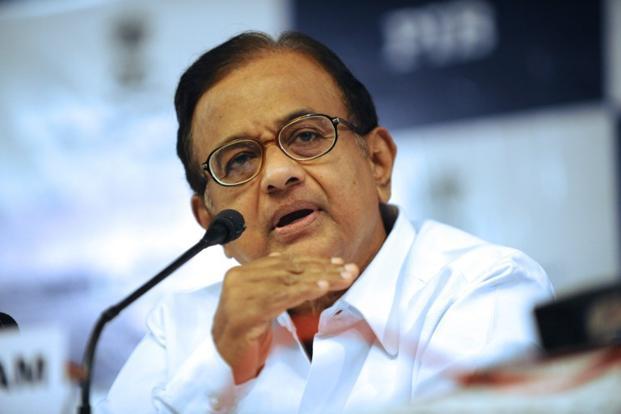This is not a joke. If the regulator allows, one can buy three public sector banks from the market—State Bank of Mysore, United Bank of India and Punjab and Sind Bank—spending just Rs.5,000 crore. And if you are willing to stretch your budget and spend Rs.10,000 crore, you can have Vijaya Bank and Dena Bank too in your kitty.
Imagine a situation—no hassles of seeking a bank licence, no spending big money on technology, looking for competent bankers to run the show and raising enormous resources. Just spend Rs.10,000 crore or about $1.5 billion at last Friday’s rupee-dollar exchange rate and buy out five up-and-running banks with an asset base of at least Rs.5 trillion and more than 8,000 branches spread across east, west, north, south and central India.
If you don’t want to spend Rs.10,000 crore and buy five banks, you can offer a little more than Rs.8,000 crore and lap up Bank of India from the market, which has roughly an equal asset base and a network of close to 5,000 branches.
To put things in perspective, in the last merger in the Indian banking industry, Kotak Mahindra Bank Ltd acquired ING Vysya Bank Ltd in 2014, valuing the latter—which had an asset base of Rs.64,582 crore and 573 branches—at Rs.15,000 crore.
On 4 June 2015, a surprise rate cut by the Reserve Bank of India (RBI) outside its policy powered the Sensex, BSE’s benchmark equity index, to cross the 30,000-point mark. An 850-point so-called budget rally that lasted four sessions prompted investors to book profits; after reaching 30,024.74 points, the Sensex had a sharp fall to close at 29,380.73 points.
The bank stocks bore the brunt—the stocks that had gained the most in the rally, triggered by two rate cuts that brought down the RBI’s policy rate to 7.5% in two months.
Since then, the policy rate has come down to 6.75%, but the market has been slipping, as have the bank stocks.
Indeed, they are not the worst performers as a pack (metals, realty and capital goods stocks have lost more and power stocks have lost as much as the bank stocks) but their contribution to the fall in the Sensex is greater than others’ as they have the maximum weightage on the Sensex—about 29%.
Let’s look at the figures first. Between 4 March 2015 and 22 January 2016, the Sensex has shed 16.8%. I am comparing the closing level of both the days and not the peak of the Sensex in March last year. In this period, BSE’s Bankex, the representative index of the industry comprising 12 bank stocks, has lost 21.7%.
The constituents of Bankex are six new private banks (HDFC Bank Ltd, ICICI Bank Ltd, Kotak Mahindra Bank Ltd, Axis Bank Ltd, Yes Bank Ltd and IndusInd Bank Ltd), one old private bank (Federal Bank Ltd) and five public sector banks (State Bank of India, Bank of Baroda, Punjab National Bank, Canara Bank and Bank of India).
Overall, 41 banks are listed on stock exchanges, including Standard Chartered Bank. Its India depository receipts are traded here.
Data collated by Ashwin Ramarathinam of Mint’s research bureau shows that in the pack of public sector banks, Bank of India has lost the most—56.53% since March. Three other banks have lost close to 50% or more. They are Canara Bank, Oriental Bank of Commerce and Allahabad Bank. Five banks, including Punjab National Bank, lost market value between 44% and 47%, while eight others, including State Bank of India, lost between 36% and 38%.
There is not a single bank in the public sector that has not lost at least 22% of its market capitalization (arrived at by multiplying a stock’s market price with the number of shares) value in the past 11 months or so. Three banks that have seen the least erosion in their market value (between 22% and 25%) are State Bank of Travancore, State Bank of Bikaner and Jaipur and State Bank of Mysore.
In contrast, IndusInd Bank has lost just about 1% of its market value in this period, and Kotak Mahindra Bank and HDFC Bank around 3% each.
Among the new private banks, ICICI Bank has lost the maximum (33%), followed by Axis Bank (31%) and Yes Bank (20%).
Within Bankex, HDFC Bank has the largest market capitalization at around Rs.2.6 trillion, followed by State Bank of India (Rs.1.43 trillion), ICICI Bank (Rs.1.35 trillion), Kotak Mahindra Bank (Rs.1.25 trillion) and Axis Bank (Rs.1 trillion).
At the other end, Bank of India and Federal Bank have around Rs.8,000 crore market cap each, Canara Bank Rs.10,000 crore and Punjab National Bank Rs.18,000 crore.
On last Friday’s market price, the Kotak Mahindra Bank and Yes Bank combine has more market value than the entire pack of public sector banks, excluding State Bank of India.
Similarly HDFC Bank alone can rival the market cap of the entire public sector banking industry minus Bank of Baroda.
Two other data points explain investors’ approach to Indian banks—the market value of six new private banks is more than three times that of the top six public banks (Rs.7 trillion vs Rs.2.2 trillion); and the total market value of all private banks (some of the old private banks have been doing badly) is almost five times the market value of all public banks (Rs.7.34 trillion vs Rs.1.48 trillion).
So, what’s happening in the banking space? The policy rate is low and it can move only southwards; inflation has been controlled and the economy is not doing badly.
In fact, the International Monetary Fund’s World Economic Outlook, released last week, has kept India’s 2016 outlook unchanged with a 7.5% growth projection. In contrast, China is expected to grow at 6.3% this year, at its slowest pace in 25 years.
We can blame external factors for investors pulling out of India (and other markets), but the truth is: the stock market has stripped most public sector banks naked.
Here is why investors are not enamoured of the public sector banks in India. In the first half of fiscal year 2016, their credit growth has been 6.2% vs private banks’ 18.8%; gross bad assets 5.6% of loans vs 2.2%; standard restructured assets 7.2% vs 2.1%; gross bad assets and 35% of standard restructured assets (typically one-third of such assets go bad) 8.2% vs 2.9%; tier-I capital or equity and reserves 8.7% vs 13%.
And most critically, for public sector banks, the net bad assets as a percentage of equity and reserves is 35.2% vs 5.3% of private sector banks.
Going by a recent study by rating agency Icra Ltd, public sector banks may need Rs.3.3 trillion capital between now and fiscal year 2019 to set aside money for their bad assets and meet the credit needs of industry and individuals.
Where will the money come from? I bet it will not be an easy task.



